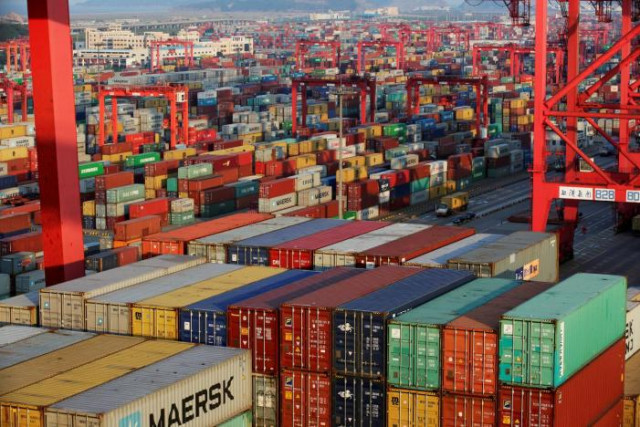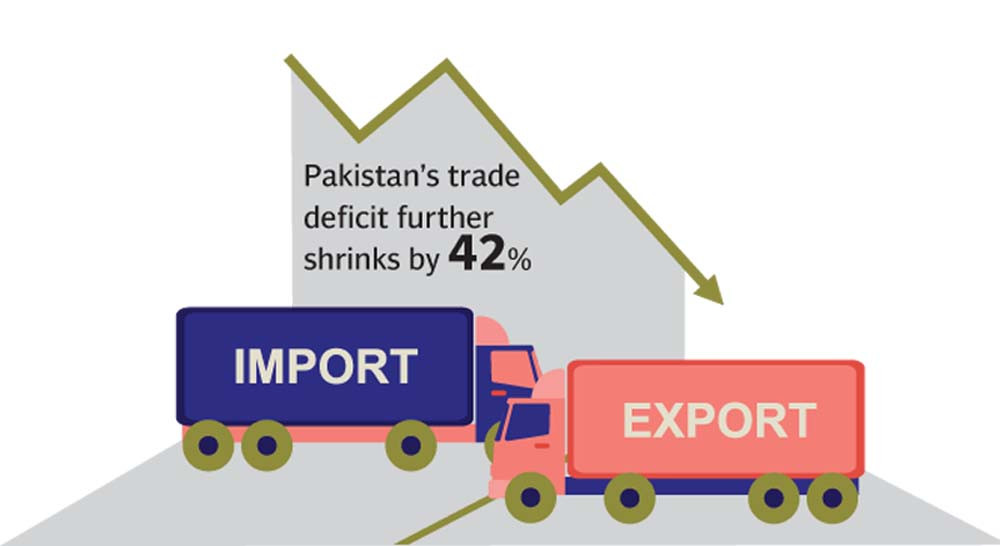Trade deficit shrinks by 42% in Q1
Drops to $5.3b on reduced imports, while export sector poses challenges

Pakistan’s trade deficit contracted by 42% to $5.3 billion in the first quarter of the fiscal year, primarily due to a significant decrease in imports, as the country’s exporters were unable to fully capitalise on the currency devaluation over the past year.
The reduction in the trade deficit by $3.9 billion in just three months has eased pressure on foreign exchange reserves, which have yet to start building up despite the International Monetary Fund (IMF) deal.
The Pakistan Bureau of Statistics (PBS), the national data collecting agency, reported that the gap between imports and exports shrank by $3.9 billion, or 42.3%, in the July-September period of the current fiscal year.
During this period, Pakistan imported $12.2 billion worth of goods, a decrease of $4.1 billion, or over one-fourth, compared to the same period last year. There had been expectations of increased imports after the government lifted regulatory duties and withdrew administrative controls.
The imports during the first three months were only one-fifth of the annual projection of $58.7 billion.
Effectively, each saved dollar through reduced imports eases pressure on the reserves, which remain at a critical level of only 1.5 months of import cover. To access the World Bank’s commercial financing, the country needs a minimum of two and a half months’ equal import cover. However, a lack of sufficient raw materials is affecting industrial output, as Pakistan heavily relies on imported raw materials for manufacturing.
Last week, in a briefing on draft policy papers, World Bank officials noted that importers were still facing problems importing non-essential category goods.
Recently, the government rejected a proposal to impose up to 100% regulatory duties on luxury imports and used cars due to objections from the European Union and the negligible impact of higher duties on curbing imports.
The proposals to impose regulatory duties on approximately 125 imported goods were presented to the Tariff Policy Board. However, the Tariff Policy Board did not endorse the recommendations and deferred the matter. Such import curbs have not proven effective in curbing imports due to the limited quantity of luxury goods imports.
It’s worth noting that six months ago, Pakistan had completely abolished regulatory duties on the import of used cars up to 1,800cc.
The PBS reported that exports contracted by 3.8% during the July-September period, totalling just $6.9 billion, a $271 million reduction in exports in three months. The quarterly exports were equivalent to 23% of the annual target of $30 billion.

design: Ibrahim Yahya
The textile industry has been seeking state subsidies in the name of regionally competitive tariffs, but it has struggled to gain support due to the poor outcomes of subsidies they have availed for decades.
Over the past year, the rupee depreciated by almost 60% against the US dollar, theoretically providing a competitive advantage to exporters. However, some of these benefits were offset by high business costs, inconsistent economic policies, and the failure of exporters to innovate and move up the value addition ladder.
Low exports have prevented the government from narrowing its external financing gap, estimated at over $26 billion for this fiscal year. The government faces difficulties in issuing Eurobonds and raising debt from foreign commercial loans.
In September alone, exports amounted to less than $2.5 billion, an increase of only $28 million, or nearly 1.1%, compared to the same month last year. Imports dropped by 25.3% to less than $4 billion year-on-year. The trade deficit in September narrowed by 48% to just $1.5 billion, a reduction of $1.4 billion compared to the same month last year. Similarly, the month-on-month trade gap shrank by 31% as exports increased by 4.1%, and imports fell by 12.7%, resulting in a month-on-month trade deficit of $1.5 billion.
Published in The Express Tribune, October 3rd, 2023.
Like Business on Facebook, follow @TribuneBiz on Twitter to stay informed and join in the conversation.



















COMMENTS
Comments are moderated and generally will be posted if they are on-topic and not abusive.
For more information, please see our Comments FAQ